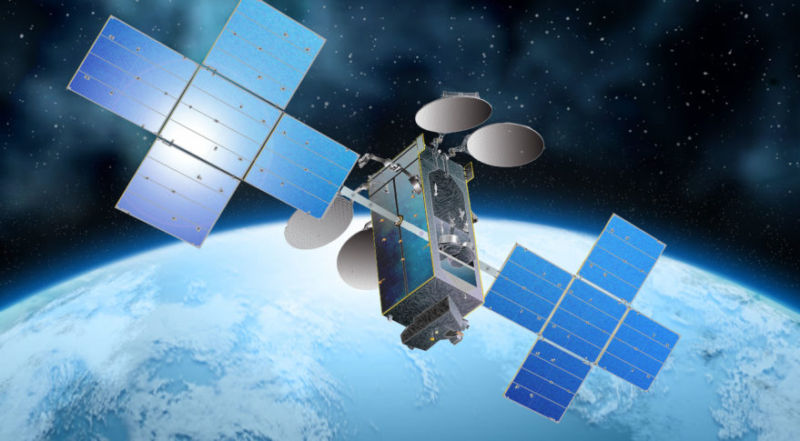
Artistic rendition of the ViaSat-3 satellite.
The cause de rigueur for industry actors these days encompasses smallsats due to their efficacy and viability in accomplishing numerous tasks which were once the purview of larger spacecraft.
Now add Viasat to the list of companies planning LEO constellations that are comprised of hundreds of satellites. Gone, apparently, is the company’s plan for a MEO constellation, opting now for the infusion of LEO smallsats into orbit.
One key for the company’s plans revolves around some subsidy funding from the $16 billion RDOF (Rural Digital Opportunity Fund) established by the Federal Communications Commission for direct monetary injections into broadband programs. This potential government payout certainly affords Viasat with an enticing move into the LEO constellation market segment.
This information comes on the heels of Viasat’s announcement of their ninth consecutive quarter of growth, bringing in Q4 2020 revenues to just over $591 million and a y-o-y of $2.3 billion and $212.4 million in revenues derived from the firm’s satellite services… that’s a y-o-y of 10.5 percent.
Now look for Viasat to request the FCC’s prior approval of the firm’s 20 MEO satellites to be transitioned to their LEO constellation. However, nothing is a given, due to the FCC’s rules regarding how the initial $16 billion of the RDOF’s total $20.4 billion initial funding will be allocated to Phase 1 or even if firms, such as Viasat, can meet the agency’s broadband performance tiers. (See the FCC’s “Measuring Fixed Broadband — Eighth Report at this direct infolink — www.fcc.gov/reports-research/reports/measuring-broadband-america/measuring-fixed-broadband-eighth-report“)

Mark Dankberg
Company CEO Mark Dankberg realizes this will be an uphill battle for Viasat and is hopeful that Phase 2 reserved RDOF funding of $4.4 billion in subsidies will encompass eligibility for LEO activities. Phase 2 will kick in after new broadband maps are developed to mark underserved areas.
Still on the Viasat development table are the ViaSat-3 and ViaSat-4 satellites. Dankberg stated that a LEO constellation would find realization sometime around 2026, if all comes to fruition.

